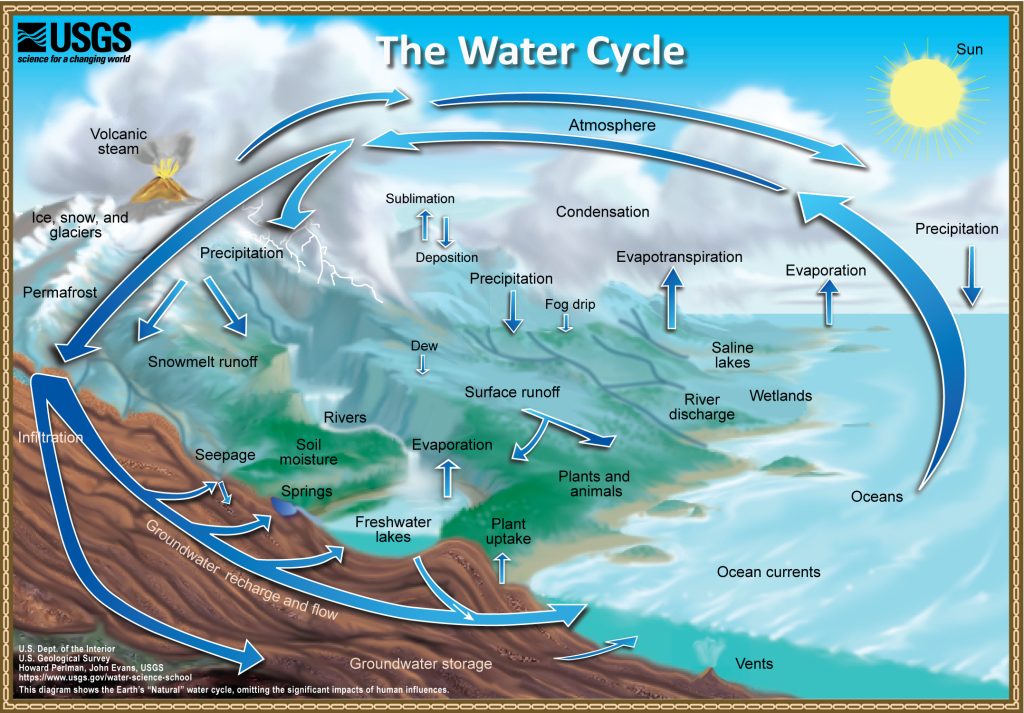Water Resources and Water Pollution
Leonardo da Vinci declared water to be the blood of Earth and Earth’s rivers its veins. How perceptive, for without water, life might not exist on Earth, and it certainly would not have the tremendous complexity and diversity that we see!
In this chapter we’ll look at several aspects of this crucial resource, including its unique properties, the places it occurs and how it moves from place to place (which is essentially the water, or hydrologic, cycle), and water’s status as a resource. We’ll study water pollution, the serious blood disorder of Earth, and what we can do to heal this disorder through water management.

Learning Objectives
After reading this chapter, you should be able to…
- explain how the molecular structure of the water molecule contributes to its unique properties.
- discuss characteristics of the various types of water reservoirs on Earth and how these reservoirs are interconnected in the water cycle
- explain how human modifications of natural water systems can be both beneficial and destructive.
- describe potential solutions to water-related problems.
- describe groundwater flow, management, and protection.
- discuss the role of various types of wetlands in an ecosystem.
- list several major water pollutants and their sources.
- demonstrate knowledge of some of the major regulations related to water in the US.

